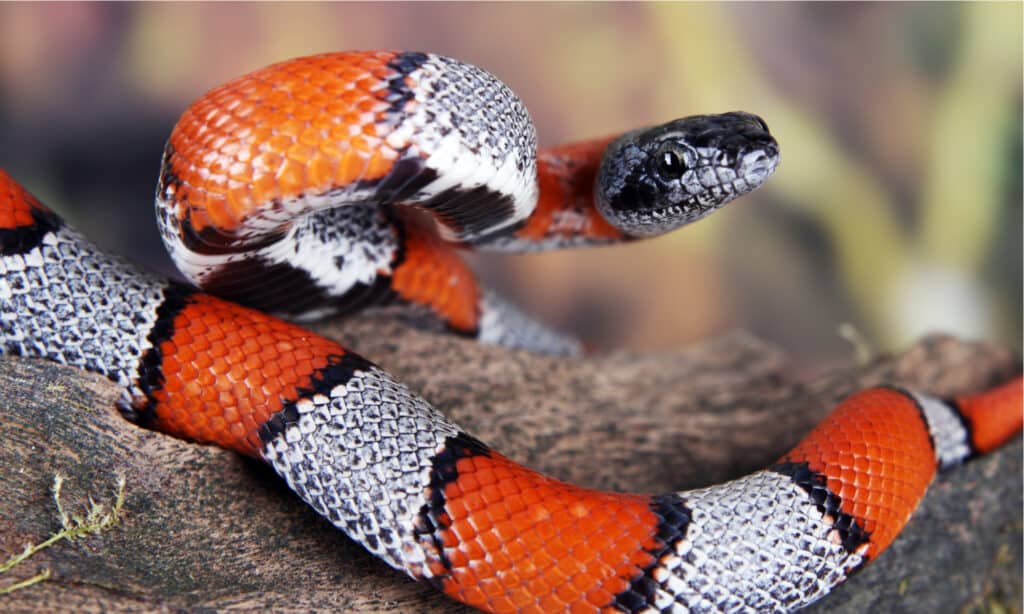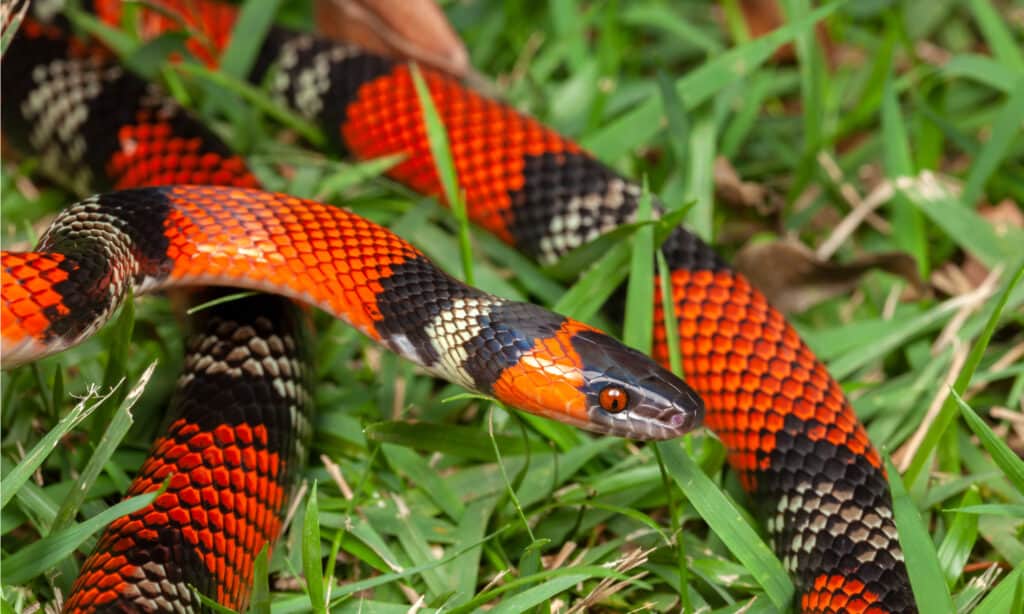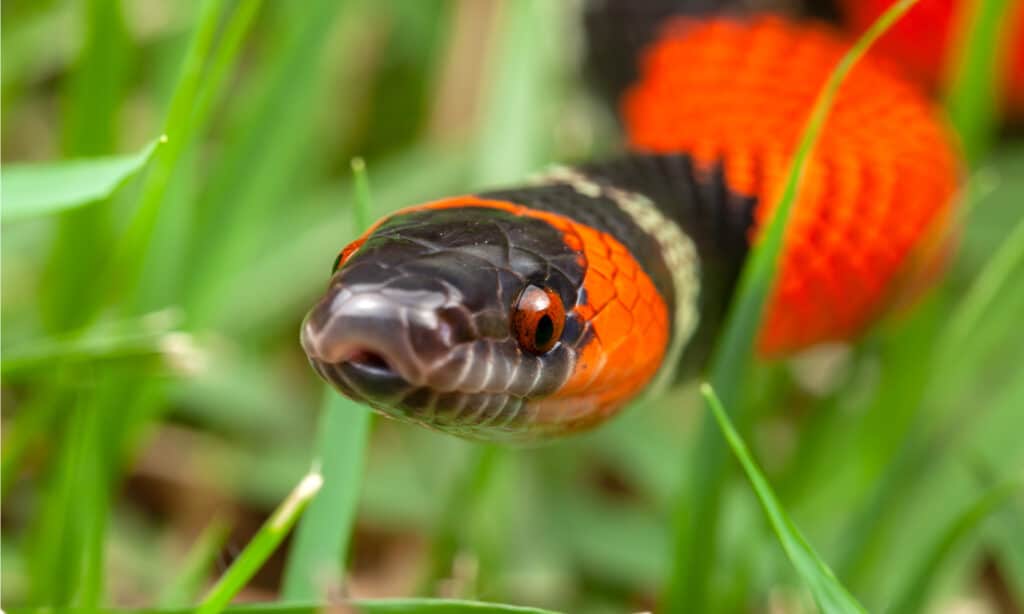“The false coral snake mimics both the coral snake and the cobra to scare away predators”
A false coral snake looks a lot like a coral snake but is non-venomous. Its diet consists of smaller snakes, lizards, and frogs. This snake makes its home in South America. False coral snakes are found in wetlands, forests, and savannas. They use their blunt snout to burrow into the soil in their habitat.
4 False Coral Snake Amazing Facts
- It can travel easily on land and in the water
- It has a lifespan of up to 15 years in captivity
- The gestation period of this snake is four to six months
- It mimics the coral snake and the cobra
Where to Find False Coral Snakes
The false coral snake lives in the northern portion of South America. These snakes live near bodies of water, and many are found in the Amazon Rainforest.
Articoli correlati
- Attacchi di squali della Carolina del Sud: dove sono accaduti gli ultimi 9 morsi
- Questo video di un coccodrillo in carica ti farà saltare
- Massicci ippopotami bloccano le zanne in una feroce resa dei conti sulla riva
- Sì! Il tuo cane può mangiare fagioli neri. Ecco perché
- Black Racer vs Copperhead: qual è la differenza?
These snakes spend a lot of time burrowing in mud and moist soil. They also hide beneath piles of leaf litter.
False Coral Snake Scientific Name
Anilius scytale is the scientific name of the false coral snake. It goes by the name American pipe snake as well. The Greek word scytale translates to baton. This relates to the cylindrical shape of this snake.
It’s in the Aniliidae family and the Reptilia class.
False Coral Snake Population and Conservation Status
The false coral snake is recorded as Least Concern by the IUCN Red List of Threatened Species. Its population is not known probably because of this snake’s tendency to hide underground.
How to Identify False Coral Snake: Appearance and Description
The false coral snake’s body features a pattern of narrow red and black bands running from head to tail and over its belly. Its entire body has an even width, and it measures up to 28 inches long. It has two round black eyes located on the black band of scales on this reptile’s head. This snake has a rounded red snout.
The false coral snake or American pipe snake is known for its mimicry of a coral snake. Over time, the false coral snake has developed a pattern of bands that mimics or copy, a coral snake’s appearance. Why? Because the coral snake is venomous and dangerous to its predators. Alternatively, a false coral snake doesn’t have venom. This makes it vulnerable to attack by birds, small mammals, and other predators. By taking on the appearance of a coral snake, a false coral snake can fool predators into thinking it’s venomous. But the coral snake is not the only venomous snake mimicked by false coral snakes. They also exhibit defensive behavior mimicry of cobras.
If a predator is not deterred by the colors and pattern of a false coral snake, this resourceful reptile takes another step to scare the threat away. It flattens its tail and raises it off the ground, so it looks like the hooded head of a cobra! When it comes to scaring away predators, the false coral snake can be sneaky!
How to identify a false coral snake:
- Narrow bright red and black bands running the length of its body
- A red and black pattern continues over its belly
- Red snout
- Black, round eyes
- A cylindrical body
False Coral Snake Pictures

Enrique Ramos/Shutterstock.com

Tacio Philip Sansonovski/Shutterstock.com

Tacio Philip Sansonovski/Shutterstock.com
False Coral Snake: How Dangerous Are They?
A false coral snake doesn’t have venom and is not considered dangerous. This snake lives beneath the ground in burrows, so it’s a rarity to see one. But, if a human does get bitten by this snake there are some steps to take to give the injury the right type of care.
First, wash the bite wound with soap and water. Put first-aid cream on the injury to prevent an infection from taking hold. Then, put a bandage over the wound to protect it from dirt and dust as it heals. If the bite wound becomes extremely red or swollen, go to a hospital or doctor’s office to get medical care.
False Coral Snake Behavior and Humans
False coral snakes have very little contact with humans. They live in rainforests, savannas, and wetlands. In fact, the total population of this snake is unknown because it is so difficult to find them.
amp soil where they can make burrows.
How big are false coral snakes?
They are smaller snakes growing to a maximum of 28 inches long.
Why is it called a false coral snake?
It’s called a false coral snake because it mimics the striped pattern and some of the colors of the actual coral snake. Mimicry of the venomous coral snake helps non-venomous false coral snakes deter predators. Most predators do not want to approach a venomous snake. Do you blame them?
What is the difference between a coral snake and a false coral snake?
Coral snakes have venom while false coral snakes are non-venomous. This is why it’s essential to know the differences between them.
A coral snake has a black snout, while a false coral snake has a red one. Coral snakes have yellow bands in addition to red and black bands. False coral snakes have only red and black bands.
Coral snakes are longer. They can measure three or even five feet in length. False coral snakes grow to about 28 inches in length.
Categoria: Coral Snakes


